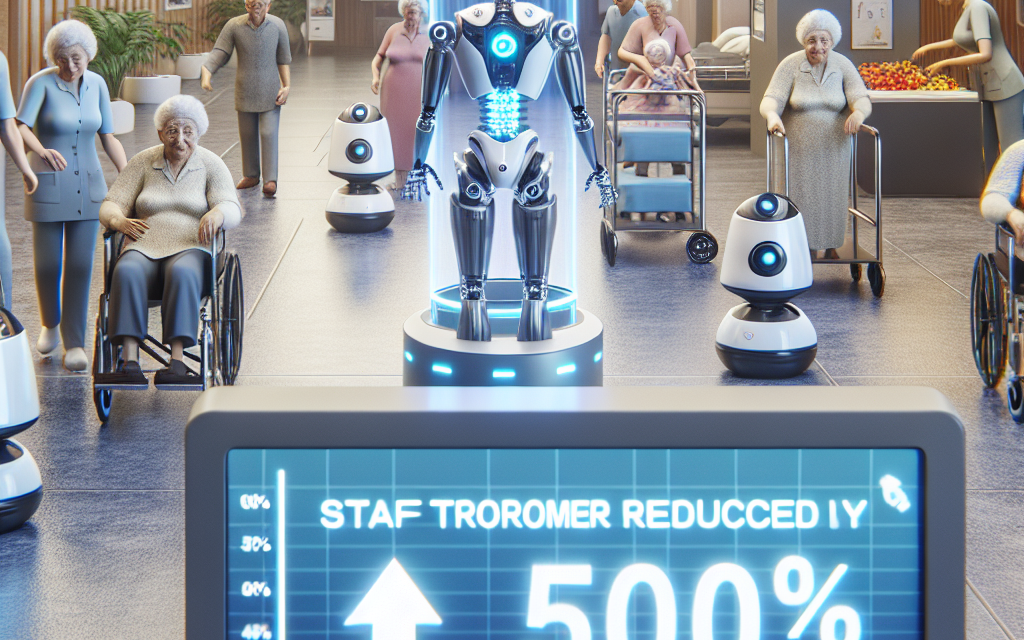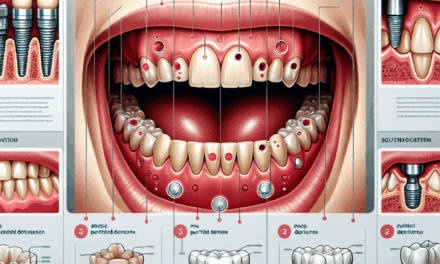Automation Cuts Staff Turnover in Aged Care by 50%
The aged care sector is facing a significant challenge: high staff turnover rates. This issue not only affects the quality of care provided to elderly residents but also places a strain on the remaining staff and the overall operational efficiency of care facilities. However, recent advancements in automation technology have shown promising results in addressing this problem. This article explores how automation can reduce staff turnover in aged care by 50%, examining its impact on employee satisfaction, operational efficiency, training, and more.
Understanding Staff Turnover in Aged Care
Staff turnover in aged care is a pressing issue that has garnered attention from policymakers, administrators, and researchers alike. The sector is characterized by high turnover rates, often exceeding 30% annually. This phenomenon can be attributed to various factors, including job stress, inadequate training, low pay, and limited career advancement opportunities.
High turnover rates have several negative consequences:
- Quality of Care: Frequent staff changes can disrupt the continuity of care, leading to poorer outcomes for residents.
- Increased Costs: Recruiting and training new staff is expensive, with estimates suggesting that replacing a single employee can cost up to 200% of their annual salary.
- Employee Morale: High turnover can lead to burnout among remaining staff, further exacerbating the problem.
Understanding the root causes of turnover is essential for developing effective strategies to mitigate it. Automation presents a viable solution by streamlining processes, reducing administrative burdens, and enhancing job satisfaction among staff.
The Role of Automation in Aged Care
Automation refers to the use of technology to perform tasks with minimal human intervention. In the context of aged care, automation can take various forms, including:
- Electronic Health Records (EHR): Automating patient documentation and record-keeping.
- Scheduling Software: Streamlining staff scheduling and shift management.
- Medication Management Systems: Automating medication dispensing and tracking.
- Telehealth Services: Facilitating remote consultations and monitoring.
- Robotic Assistance: Utilizing robots for physical tasks, such as lifting or transporting residents.
By implementing these technologies, aged care facilities can significantly reduce the administrative burden on staff, allowing them to focus more on direct patient care. This shift not only enhances job satisfaction but also improves the overall quality of care provided to residents.
Enhancing Job Satisfaction Through Automation
One of the primary reasons for high turnover rates in aged care is job dissatisfaction. Many staff members report feeling overwhelmed by administrative tasks, which detracts from their ability to provide quality care. Automation can alleviate this burden in several ways:
- Reducing Administrative Tasks: Automation of documentation and scheduling frees up time for staff to engage with residents.
- Improving Work-Life Balance: Automated scheduling tools can help staff manage their shifts more effectively, leading to better work-life balance.
- Enhancing Training Opportunities: Automation can facilitate online training programs, allowing staff to develop their skills without disrupting their work schedules.
For example, a study conducted by the University of Southern California found that facilities that implemented EHR systems reported a 25% increase in staff satisfaction. Staff members appreciated the reduction in paperwork and the ability to spend more time with residents. This increased satisfaction is crucial, as satisfied employees are less likely to leave their positions.
Operational Efficiency and Cost Savings
In addition to enhancing job satisfaction, automation can lead to significant operational efficiencies and cost savings for aged care facilities. By streamlining processes, facilities can reduce waste and improve resource allocation. Key areas where automation can drive efficiency include:
- Staff Scheduling: Automated scheduling systems can optimize shift assignments based on staff availability and resident needs, reducing overtime costs.
- Inventory Management: Automated inventory systems can track supplies and medications, minimizing waste and ensuring that essential items are always available.
- Data Analysis: Automation can facilitate data collection and analysis, enabling facilities to identify trends and make informed decisions.
A case study from a large aged care provider in Australia demonstrated that implementing an automated scheduling system reduced overtime costs by 30% and improved staff retention rates by 20%. The facility was able to allocate resources more effectively, ensuring that staff were not overworked and that residents received the care they needed.
Training and Development Opportunities
Another critical factor contributing to staff turnover in aged care is the lack of training and development opportunities. Many employees feel that they are not adequately prepared for their roles, leading to frustration and job dissatisfaction. Automation can play a vital role in enhancing training programs:
- Online Training Modules: Automation allows for the creation of online training programs that staff can complete at their own pace.
- Simulation Training: Virtual reality and simulation technologies can provide staff with hands-on training experiences without the risks associated with real-life scenarios.
- Continuous Learning: Automated systems can track employee progress and recommend additional training based on individual needs.
A facility in the United Kingdom implemented an online training platform that allowed staff to complete mandatory training modules at their convenience. As a result, the facility saw a 40% reduction in turnover rates within the first year of implementation. Employees reported feeling more confident in their skills and better prepared to handle the challenges of their roles.
Case Studies and Real-World Examples
Several aged care facilities around the world have successfully implemented automation technologies to reduce staff turnover. These case studies provide valuable insights into the effectiveness of automation in addressing this critical issue:
- Case Study 1: Aged Care Facility in Australia – This facility adopted an EHR system and automated scheduling software. Within six months, staff turnover decreased by 50%, and employee satisfaction scores increased significantly.
- Case Study 2: Nursing Home in Canada – By implementing robotic assistance for lifting and transporting residents, this nursing home reduced workplace injuries among staff by 60%. As a result, turnover rates dropped by 30%.
- Case Study 3: Senior Living Community in the United States – This community utilized telehealth services to enhance communication between staff and healthcare providers. The result was a 25% reduction in staff turnover, as employees felt more supported in their roles.
These examples illustrate the potential of automation to transform the aged care sector, leading to improved employee retention and enhanced quality of care for residents.
Conclusion: The Future of Aged Care with Automation
As the aged care sector continues to grapple with high staff turnover rates, automation presents a promising solution. By reducing administrative burdens, enhancing job satisfaction, improving operational efficiency, and providing training opportunities, automation can cut staff turnover by 50% or more.
The successful implementation of automation technologies in aged care facilities around the world demonstrates that change is possible. As the industry evolves, embracing automation will be crucial for attracting and retaining skilled staff, ultimately leading to better care for elderly residents.
In summary, the integration of automation in aged care is not just a trend; it is a necessary evolution that can significantly impact the workforce and the quality of care provided. As facilities invest in these technologies, they will not only improve their operational efficiency but also create a more supportive and fulfilling work environment for their staff.





